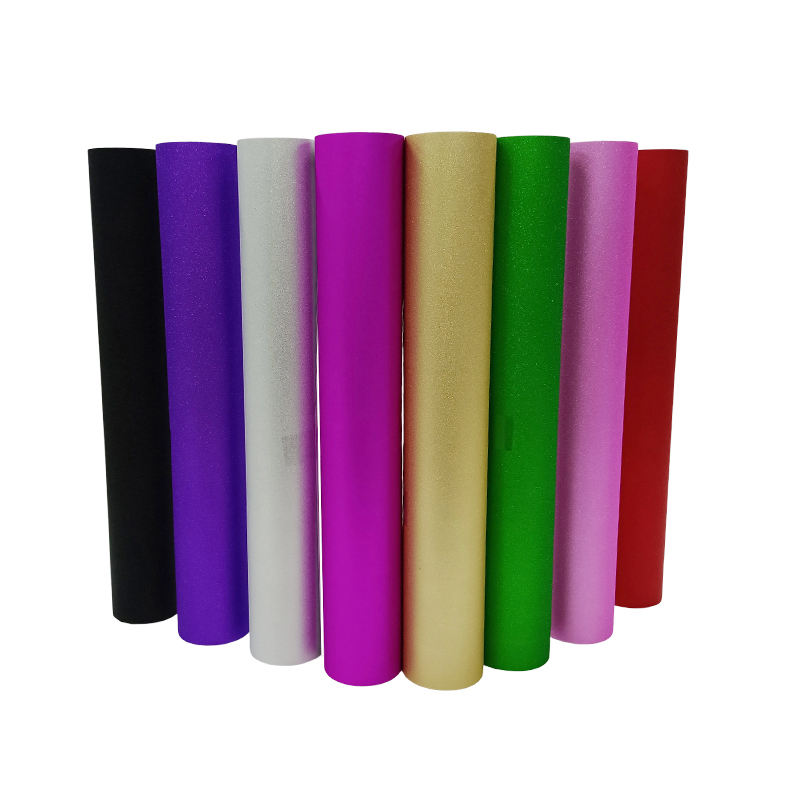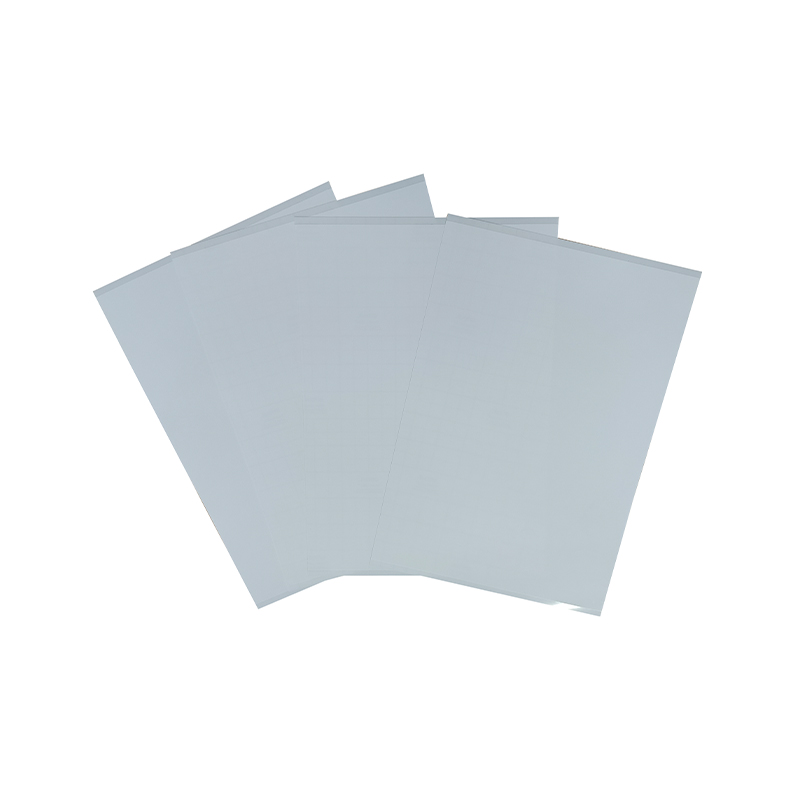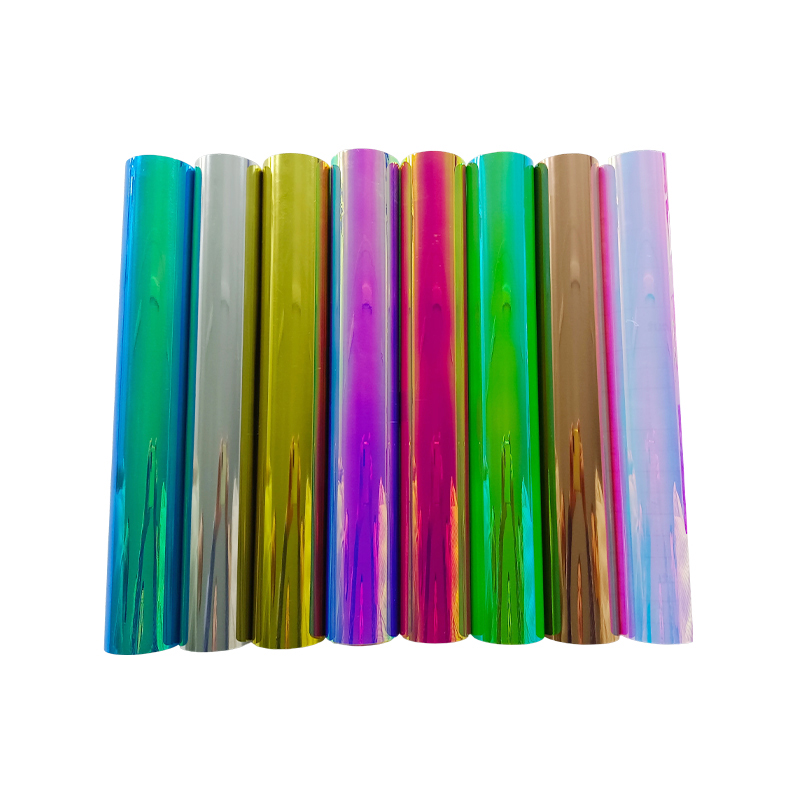How does adhesive foil vinyl revolutionize surface decoration with its metallic texture and versatility?
Release Time : 2025-11-11
In the fields of modern decoration and personalized customization, the visual expressiveness and ease of application of materials are increasingly becoming key to design implementation. Adhesive foil vinyl—a flexible film material with self-adhesive backing and a realistic metallic sheen—is rapidly becoming an efficient solution for revitalizing ceramic, glass, plastic, wood, and even fabric surfaces thanks to its rich color selection, excellent adhesion, and broad substrate compatibility. It not only simulates the luxurious texture of precious metals such as gold, silver, copper, and rose gold, but also brings professional-grade decorative effects to home DIY and commercial space renovations with its "tear-and-apply" method.
The core advantage of adhesive foil vinyl stems from its composite structure and advanced coating process. The substrate is typically a high-strength polyester (PET) or polyvinyl chloride (PVC) film, with a vacuum-deposited layer of aluminum, zinc, or other metals, followed by a transparent protective film to enhance abrasion resistance and UV resistance. This structure retains the mirror-like reflectivity and cool touch of metal while avoiding the heaviness, cost, and easy oxidation of real metals. The adhesive layer uses a high initial tack and low residue acrylic pressure-sensitive adhesive, ensuring a strong bond on various materials while facilitating easy removal or replacement without damage, meeting the needs of temporary decoration or seasonal updates.
Its excellent adaptability to multiple substrates greatly expands its application scenarios. In the home furnishing sector, it can be used to renovate old cabinet doors, refrigerator panels, lamp housings, or picture frame edges, instantly enhancing the sophistication of the space. In crafts, it can give ceramic vases, glassware, and acrylic ornaments a high-end metallic look. In the fashion and textile industries, some flexible foil films can also be heat-pressed onto canvas bags, sneakers, or parts of clothing to create trendy color-blocking effects. Even on curved, corner, or slightly uneven surfaces, high-quality foil films possess excellent extensibility and plasticity, allowing for seamless wrapping with the aid of a heat gun.
The diversity of colors and textures further enhances its design value. In addition to classic metallic colors, the product line also includes matte, brushed, hammered, gradient, and even pearlescent effects, satisfying diverse aesthetics from minimalist industrial style to retro-chic style. Some high-end series introduce environmentally friendly water-based coatings, RoHS and REACH certified, suitable for decorating children's rooms or food contact surfaces (non-direct contact surfaces), balancing aesthetics and safety.
The application process requires no professional tools or complex skills. Users simply need to clean the substrate surface, cut the foil, slowly peel it off, and use a scraper to remove air bubbles to achieve a visual effect comparable to spraying or electroplating. The entire process is dust-free, odorless, and requires no curing time, significantly reducing the barrier to entry and time costs for renovations. For commercial spaces such as cafes, retail stores, or showrooms, adhesive foil vinyl can quickly achieve brand visual consistency or holiday-themed decorations, enhancing the space's appeal without disrupting normal business operations.
Ultimately, the value of adhesive foil vinyl lies not only in its "metal-like" appearance but also in its democratization, immediacy, and sustainability of high-end decoration. When an ordinary glass bottle becomes the focal point of a dining table after being coated with rose gold foil, or an old cabinet door is revitalized by a brushed silver film, users gain not only a visual upgrade but also a low-cost, high-return creative experience. In an era that values both individual expression and resource conservation, adhesive foil vinyl, with its lightweight design, embodies the dual pursuit of beauty and efficiency.
The core advantage of adhesive foil vinyl stems from its composite structure and advanced coating process. The substrate is typically a high-strength polyester (PET) or polyvinyl chloride (PVC) film, with a vacuum-deposited layer of aluminum, zinc, or other metals, followed by a transparent protective film to enhance abrasion resistance and UV resistance. This structure retains the mirror-like reflectivity and cool touch of metal while avoiding the heaviness, cost, and easy oxidation of real metals. The adhesive layer uses a high initial tack and low residue acrylic pressure-sensitive adhesive, ensuring a strong bond on various materials while facilitating easy removal or replacement without damage, meeting the needs of temporary decoration or seasonal updates.
Its excellent adaptability to multiple substrates greatly expands its application scenarios. In the home furnishing sector, it can be used to renovate old cabinet doors, refrigerator panels, lamp housings, or picture frame edges, instantly enhancing the sophistication of the space. In crafts, it can give ceramic vases, glassware, and acrylic ornaments a high-end metallic look. In the fashion and textile industries, some flexible foil films can also be heat-pressed onto canvas bags, sneakers, or parts of clothing to create trendy color-blocking effects. Even on curved, corner, or slightly uneven surfaces, high-quality foil films possess excellent extensibility and plasticity, allowing for seamless wrapping with the aid of a heat gun.
The diversity of colors and textures further enhances its design value. In addition to classic metallic colors, the product line also includes matte, brushed, hammered, gradient, and even pearlescent effects, satisfying diverse aesthetics from minimalist industrial style to retro-chic style. Some high-end series introduce environmentally friendly water-based coatings, RoHS and REACH certified, suitable for decorating children's rooms or food contact surfaces (non-direct contact surfaces), balancing aesthetics and safety.
The application process requires no professional tools or complex skills. Users simply need to clean the substrate surface, cut the foil, slowly peel it off, and use a scraper to remove air bubbles to achieve a visual effect comparable to spraying or electroplating. The entire process is dust-free, odorless, and requires no curing time, significantly reducing the barrier to entry and time costs for renovations. For commercial spaces such as cafes, retail stores, or showrooms, adhesive foil vinyl can quickly achieve brand visual consistency or holiday-themed decorations, enhancing the space's appeal without disrupting normal business operations.
Ultimately, the value of adhesive foil vinyl lies not only in its "metal-like" appearance but also in its democratization, immediacy, and sustainability of high-end decoration. When an ordinary glass bottle becomes the focal point of a dining table after being coated with rose gold foil, or an old cabinet door is revitalized by a brushed silver film, users gain not only a visual upgrade but also a low-cost, high-return creative experience. In an era that values both individual expression and resource conservation, adhesive foil vinyl, with its lightweight design, embodies the dual pursuit of beauty and efficiency.







